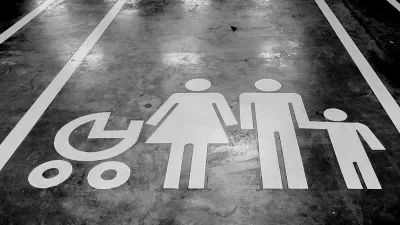Even when urban centers are losing families, this trend does not necessarily apply to rich areas near downtown.

One common argument against the long-term viability of urbanism is that cities are just playgrounds for the rich and childless, and that families are continuing to desert cities. Last week, NYU's Furman Center issued a report on New York's housing problems, listing data for each of the city's 55 neighborhood clusters.
The most interesting data set (at least for the purposes of this post) is the percentage of households with children under 18. Does it show that families are leaving New York City? Yes and no.
One might think that, based on the "playground" thesis, that expensive, dense neighborhoods are incapable of retaining families. But the data suggests the opposite: rich neighborhoods are gaining families, and not-so-rich neighborhoods are bleeding families.
In particular, Manhattan has 12 neighborhood clusters. In seven of them, median household income exceeds $90,000 per year (Financial District, Greenwich Village,Chelsea, Midtown,Turtle Bay, Upper West Side, Upper East Side). In all of these areas, population density exceeds 45,000 people per square mile and over 80 percent of commutes are car-free. And in every single one of them, the "family percentage" rose between 2000 and 2014. For example, in the Upper East Side, the percentage of households with children rose from 13 percent in 2000 to 18 percent in 2014. And in the Upper West Side, the family percentage rose from 14 percent to 18 percent. Even in less family-oriented rich areas, the family percentage rose: in Chelsea and Midtown, from 8.4 percent to 9.1 percent.
But Manhattan also has five clusters where the median income is below $50,000 (East Harlem, Central Harlem, Washington Heights, Morningside Heights, Lower East Side). All of these areas have historically been more family-oriented than the city’s richer areas. And in all of them, the family percentage nosedived. For example, in East Harlem, Manhattan’s poorest area, the percentage of households with children nosedived from 38 percent to 27 percent. Similarly, in Central Harlem the family percentage declined from 34 percent to 25 percent.
The city's less affluent outer boroughs generally lost children as well. In Brooklyn's one truly affluent area, Park Slope (household income $113,187), the percentage of households with children increased from 25 percent to 32 percent. But in the 11 areas with incomes under $50,000, the family percentage declined in nine, rising only in Boro Park and nearby Bensonhurst. Brooklyn's six in-between areas (Greenpoint, Canarsie, Sheepshead Bay, Flatbush, Fort Greene, Bay Ridge) also lost families: the family percentage rose slightly in one (Bay Ridge) and declined elsewhere.
So at least in New York, rich areas gained children and less rich areas (whether they were gentrifying, middle-income or poor) tended to lose them.

Alabama: Trump Terminates Settlements for Black Communities Harmed By Raw Sewage
Trump deemed the landmark civil rights agreement “illegal DEI and environmental justice policy.”

Study: Maui’s Plan to Convert Vacation Rentals to Long-Term Housing Could Cause Nearly $1 Billion Economic Loss
The plan would reduce visitor accommodation by 25% resulting in 1,900 jobs lost.

Planetizen Federal Action Tracker
A weekly monitor of how Trump’s orders and actions are impacting planners and planning in America.

Waymo Gets Permission to Map SF’s Market Street
If allowed to operate on the traffic-restricted street, Waymo’s autonomous taxis would have a leg up over ride-hailing competitors — and counter the city’s efforts to grow bike and pedestrian on the thoroughfare.

Parklet Symposium Highlights the Success of Shared Spaces
Parklets got a boost during the Covid-19 pandemic, when the concept was translated to outdoor dining programs that offered restaurants a lifeline during the shutdown.

Federal Homelessness Agency Places Entire Staff on Leave
The U.S. Interagency Council on Homelessness is the only federal agency dedicated to preventing and ending homelessness.
Urban Design for Planners 1: Software Tools
This six-course series explores essential urban design concepts using open source software and equips planners with the tools they need to participate fully in the urban design process.
Planning for Universal Design
Learn the tools for implementing Universal Design in planning regulations.
Caltrans
Smith Gee Studio
Institute for Housing and Urban Development Studies (IHS)
City of Grandview
Harvard GSD Executive Education
Toledo-Lucas County Plan Commissions
Salt Lake City
NYU Wagner Graduate School of Public Service






























